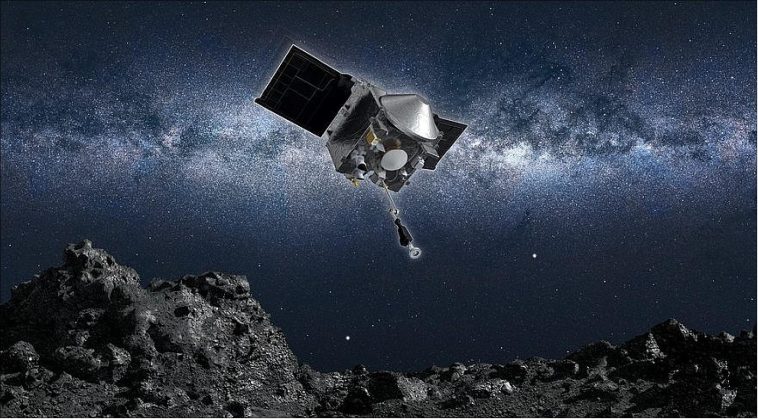On a quest to understand the mysteries of an impending asteroid known as the ‘God of Chaos’, NASA has launched the spacecraft OSIRIS-APEX; the successor to the recently returned OSIRIS-REx. This spacecraft’s core mission is to examine Apophis, the ‘God of Chaos’ asteroid, as it spirals closer to Earth, an extraordinary event expected to occur in 2029. This impending asteroid flyby is highly unusual – an occurrence that hasn’t been witnessed since our civilization started documenting astronomical history.
The OSIRIS-APEX spacecraft made a safe return to our planet in September, after a seven-year trip in space, during which it acquired precious samples from the Bennu asteroid. With its mission term extended, it has departed yet again, this time to investigate an asteroid considerably more menacing: Apophis.
Named the ‘God of Chaos’, Apophis is projected to perform a cosmic dance just 20,000 miles away from Earth on April 13, 2029. This lands it closer than some of our planet’s man-made satellites. Depending on our planet’s hemisphere, some lucky individuals may even have the unprecedented chance of witnessing this event with the naked eye.
This celestial behemoth spans approximately 370 yards in diameter and makes such close approaches to Earth with a frequency of once every 7,500 years. The strong pull of Earth’s gravity will certainly influence Apophis as it moves into our planet’s gravitational influence, and how it reacts is a central focus of the OSIRIS-APEX mission.
Amy Simon, the project scientist leading the mission, has emphasized OSIRIS-APEX’s role in observing the changes provoked on Apophis’ surface due to Earth’s gravitational forces. It is anticipated that our planet’s gravity will immensely affect the duration of the asteroid’s day, currently estimated at around 30.6 hours.
One presumed consequence of Apophis encountering Earth’s gravitational field could be geological upheaval, possibly triggering tremors and landslides on the asteroid itself. These could lead to significant surface changes, providing scientists with an invaluable opportunity to understand the underlying processes.
The potential implications of these events extend beyond just an asteroid; they could offer invaluable insights into the formation of our planet. According to Dani Mendoza DellaGiustina, the principal investigator for OSIRIS-APEX at the University of Arizona in Tucson, understanding the accumulation of rubble and the impacts of tidal forces could steer researchers towards the processes responsible for the evolution of planets from the early solar system’s debris.
The rendezvous with this S-type asteroid is scheduled for April 13, 2029. However, OSIRIS-APEX won’t be making a landing on the asteroid range; instead, it will hover nearby, closely monitoring Apophis for an extended period of 18 months.
NASA’s spacecraft intends to scrutinize the transformations in Apophis’ surface composition, map its terrestrial layout, and probe into the molecular composition of the rock. These operations will provide researchers with a hitherto unparalleled understanding of Apophis and, by extension, asteroid behavior in general.
In order to gain insights into the core structure of Apophis, the spacecraft will operate within a strikingly close distance of 16 feet from the asteroid’s surface. By activating its thrusters in a downward direction, the spacecraft will stir up materials lying beneath, giving scientists a glimpse into the hidden layers of the roving asteroid.
Even though Apophis’ close approach is still half a decade away, the scientific community is already keeping a close watch on it. As the ‘God of Chaos’ commences its first out of the six solar approaches, researchers are piquing their interest, gearing up for what promises to be an extraordinary spectacle of nature.
Indeed, the OSIRIS-APEX mission is an epoch-making study ever performed in space that offers an enticing, promising, and previously unthinkable prospect – to unravel the secrets of an asteroid of such proximity in real-time. Its mission may open doors for our advanced understanding of the solar system, and ultimately our existence in the universe.
The galactic date of April 13, 2029, may become a historic milestone in our understanding of the cosmos. No stone is being left unturned in preparation for this cosmic event, offering the opportunity to rewrite how we view the world beyond our planet.
OSIRIS-APEX, the intrepid spacecraft, is thus geared up for its mission, sailing towards uncharted territory. As it journeys to Apophis, it carries with it the hopes and expectations of scientists and space enthusiasts alike, all waiting with bated breath for what secrets the ‘God of Chaos’ may reveal.



